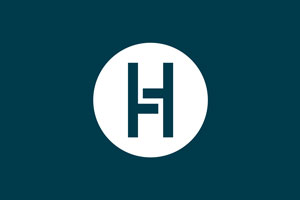Technical recruiting isn’t easy these days, especially in cities like Austin, where tech job growth continues to outpace the number of available candidates. That means extreme competition for top software developers, data scientists, and other tech talent. What’s an employer to do? Steal from the playbooks of Austin’s top employers who have technical recruiting down to a science.
- Pay well. All other factors being equal, you’d better believe a top job candidate will pick the employer with the best total compensation package. Research how your competitors structure their pay (The HT Group can help) and how they communicate it to job seekers (is it transparently listed in the job description?), then balance it with other perks. More than two in five job seekers report that company transparency on pay and benefits matters most when assessing a job’s long-term potential.
- Offer support for professional development. We’ve covered before how important it is to upskill current employees to fill critical labor gaps. The good news is that top talent is entirely on board. LinkedIn found that 94% of employees would stay with a company longer if it invested in their career. That makes professional development essential for both retention and recruiting. For technical recruiting, it’s critically important because tech trends are always changing.
- Pay attention to candidate and employee reviews. Glassdoor reports that, after a bad candidate experience, 72% of job seekers share their employer encounters online. How can this affect your ability to attract top talent? More than half (55%) of job seekers admit they avoid certain companies after reading negative reviews. Employee reviews count, too. No one wants to work for a company that employees are willing to complain about online. Keep an eye on Glassdoor, Indeed, and other job and review sites and stay on top of negative trends.
- Don’t be a jerk during the hiring process. The Golden rule of technical recruiting? Treat candidates the way you’d want to be treated. Poor communication, a drawn-out interview process with unnecessary hoops to jump through, requests for (free) finished work, and being late to or rude during interviews are sure ways to turn off top talent. To make a good impression, you don’t need to make interviews a breeze, but you do need to make them productive and worthwhile for both parties. Neil Roseman, former technology VP for both Amazon and Zynga, offers tips on how to do that here.
- Provide clear, well-defined job descriptions. In a recent tech industry survey, software developers admitted they were most likely to be turned off by employers who don’t provide enough clarity around roles or where they’ll be placed. For insights on crafting the best job descriptions, look at what we recently uncovered here.
- Embrace vulnerability. Brené Brown, a popular author, speaker, and researcher at the University of Houston, says that employees want to work for brave leaders. But what IS brave leadership? Her research shows that it comes not from those who brazenly fight to the top, but from those who embrace vulnerability in a way that empowers others (instead of knocking others down, shutting others out, or using it as a weapon to “shame and blame”).
- Respect culture fit. One-third of job seekers would pass up the perfect job if the corporate culture’s a bad fit. The numbers are about the same among software developers, with junior developers being turned off the most by poorly matched work culture. Your culture won’t be perfect for everyone, but, if most of your job candidates aren’t impressed with what they witness during the interview process, you have a problem. Gone are the days in which a candidate is willing to overlook red flags just to have a job.
- Make diversity and inclusion priorities. About 85% of women and 62% of men believe gender discrimination exists in tech. Gender bias may be something you’re already tackling, but what about other areas of diversity and inclusion like sexual orientation, age, race, and even political affiliation? HR Daily Advisor reports that 8 in 10 Americans view racial and ethnic diversity in the workplace as important. Plus, Gen Z is the most racially diverse generation in U.S. history, and they expect to work in environments that embrace it. In the realm of tech recruiting, Dice.com reports that job referrals are cut by 25% when employees witness discriminatory behavior at work. For more, see the most recent Dice Diversity and Inclusion Report.
- Take flexibility seriously. Flexible hours can influence 88% of job seekers to choose an opportunity that offers a lower salary over one with a higher salary but a fixed schedule. Additionally, 8 out of 10 parents chose flexibility and work-life balance as the most essential factors in a potential job opportunity (although flexibility is valued across demographics, not just with employees who have children).
- Understand the different needs of your hourly workforce. A new survey suggests hourly job seekers are more likely to reject job offers because of a long commute rather than pay—at a rate of four to one. For these workers, company culture is barely a concern and only 10% rejected an offer due to money.
- Have impeccable timing. This means two things: Hire before you’re desperate and hire quickly. The average time-to-hire for IT professionals in the U.S. is about 50 days. That’s too long. Top talent is overwhelmed by offers within two weeks of being on the market. You’ll end up in a bidding war that—unless you have these other factors securely in place—you’re sure to lose. Working with a reputable technical recruiting firm like The HT Group is vital. We have the relationships and tools in place to recruit technical talent efficiently. We can recruit passive candidates who aren’t officially “on the market.” And we can help you set up contract or temp-to-hire arrangements for new or changing positions that might not be ready for a permanent place on your roster.
FIND GREAT TALENT NOW
The HT Group fills roles in Temporary Staffing, Executive Search, Technical Recruiting, and Retained Search.
And be sure to connect with us on LinkedIn, Facebook and Twitter for up-to-date news and tips and let us know what’s on your mind.




